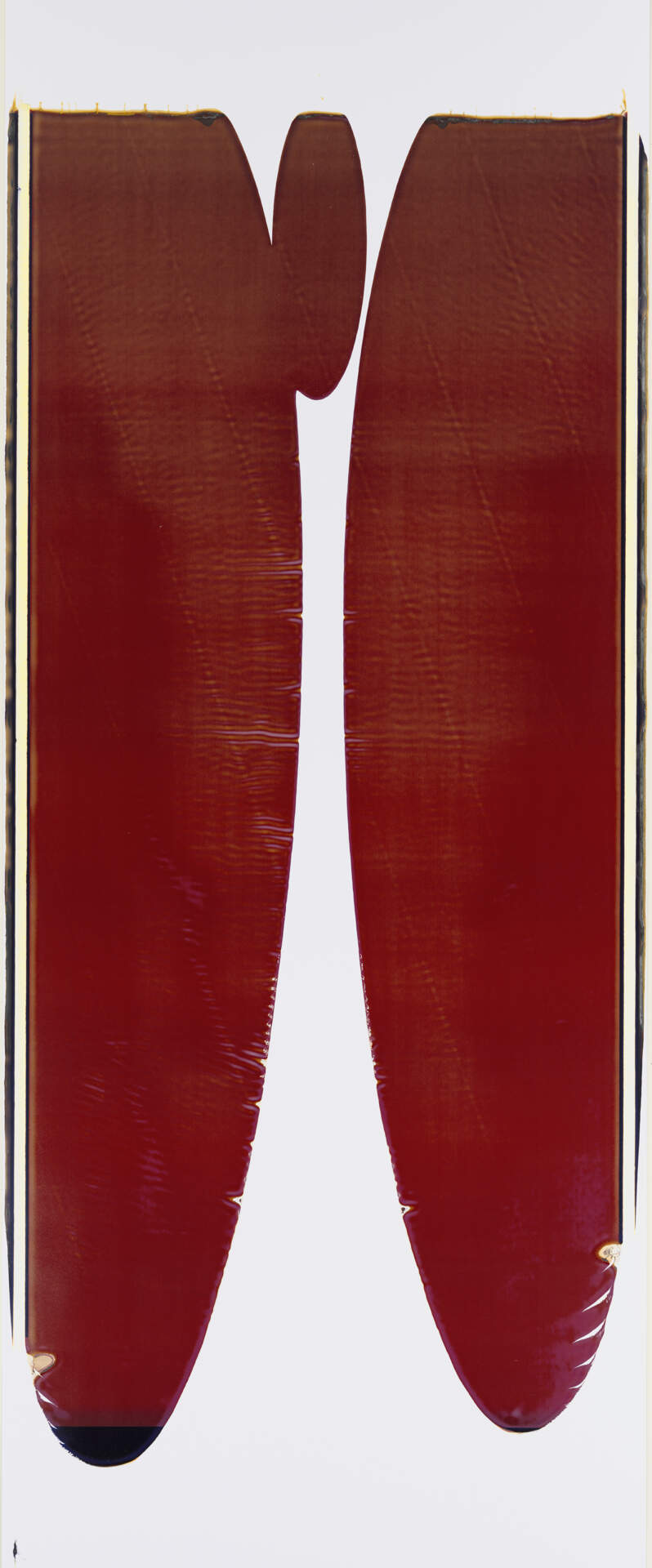Ellen Carey (b. 1952)Pull XL
2004
Polaroid 40 X 80 Color Positive and Negative, Dye-diffusion transfer prints-Unique
128 inches x 44 inches each
Burchfield Penney Art Center, Gift of the Artist in memory of her parents and brother, Courtesy of Nina Freudenheim (Buffalo, NY), Jayne H. Baum (New York, NY), M+B (Los Angeles, CA), Yossi Milo Gallery, (New York, NY), 2017
Ellen Carey is an experimental photographer and lens-based artist whose unique work spans several decades. Her innovative discovery of the abstract form known as a parabola, expressed as a black conical loop in her minimal Polaroid Pulls introduce a different reality to photography’s traditional history of record and document. Her Polaroid Pulls followed by her Rollbacks are new to the medium, seen in The Polaroid Years: Instant Photography and Experimentation.
Edwin H. Land invented Polaroid, his instantaneous image, in the 1940s; but Carey was among the first to investigate alternative approaches to photography, imaginative ways of seeing, beginning in the 1970s. She explored concepts developed in other, areas in art—abstraction, minimalism, conceptual art, stating:
“The American invention of Polaroid 20 X 24 (circa 1980) complements these breakthroughs in visual thinking with my discovery of the Pull in 1996, producing an abstract and minimal image that is simultaneously photograph and process; it fits under my umbrella concept Photography Degree Zero (1996-2017).”
Her phrase references Writing Degree Zero (1953) by Roland Barthes, who illuminates on the non-linear approach in literature by the French avant-garde. Similarly, Carey aims to free the traditional “picture signs” in photography—landscape, portrait, still life—in a less-is-more approach whose end results emphasize process and light, photography’s indexical, with color and form. Her experiments often use the absence of light (zero again) or a mix of both in her exposures, yielding new expressions with high impact. On view here is the even larger Polaroid 40 X 80 Pulls XL; Carey was the last photographer to use this camera before it was dismantled, never to be re-assembled.
Ellen Carey’s Pullsappear on the cover of The Polaroid Project: At the Intersection of Art and Technology, the 2017 scholarly analysis of Polaroid’s effect on art, science, and technology that accompanies a major traveling exhibition organized by the Amon Carter Museum of America Art. Carey is an Associate Professor in Photography at the Hartford Art School, University of Hartford. Her Polaroid work is ranked as one of the foremost examples of contemporary photography in the world, in the context of the legacy of experimental avant-garde, it contributes and advances our picture culture.
